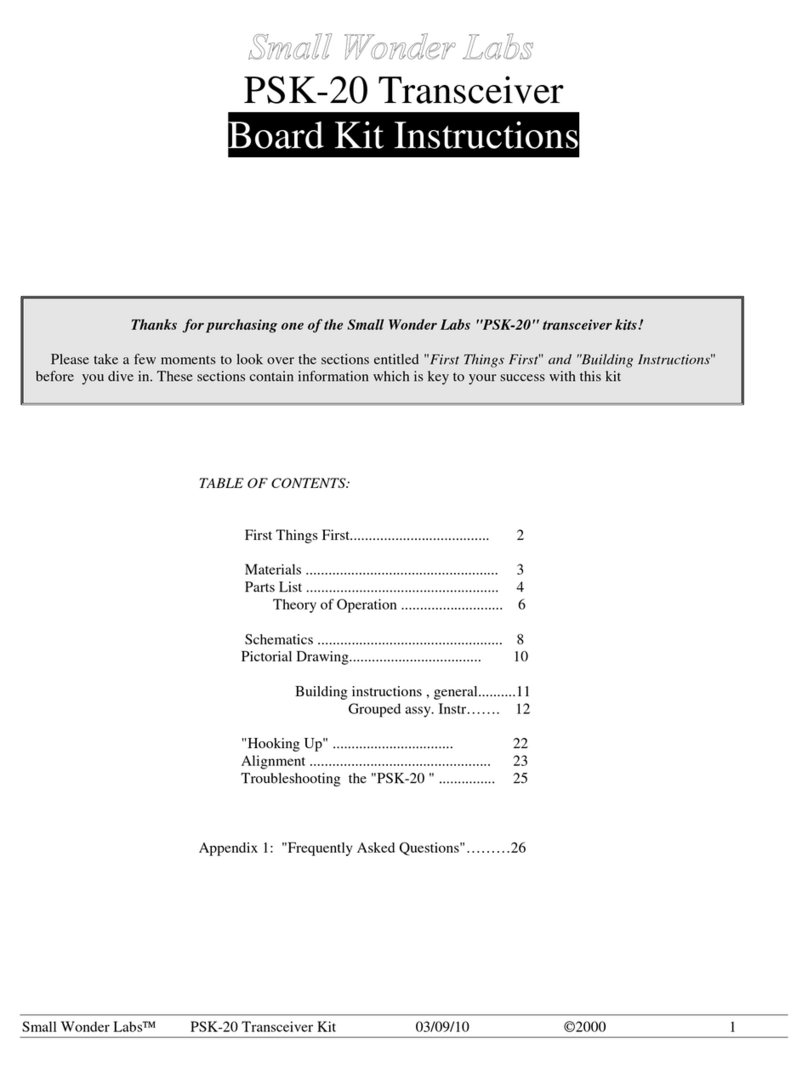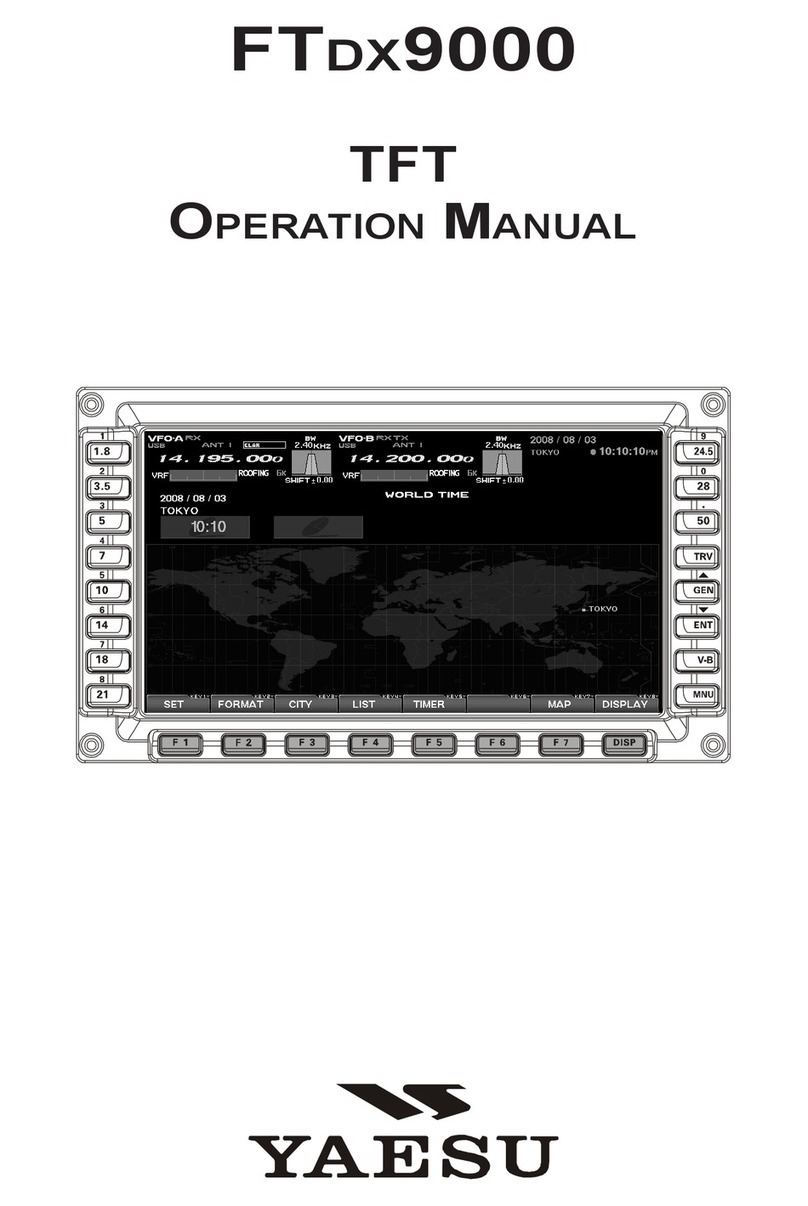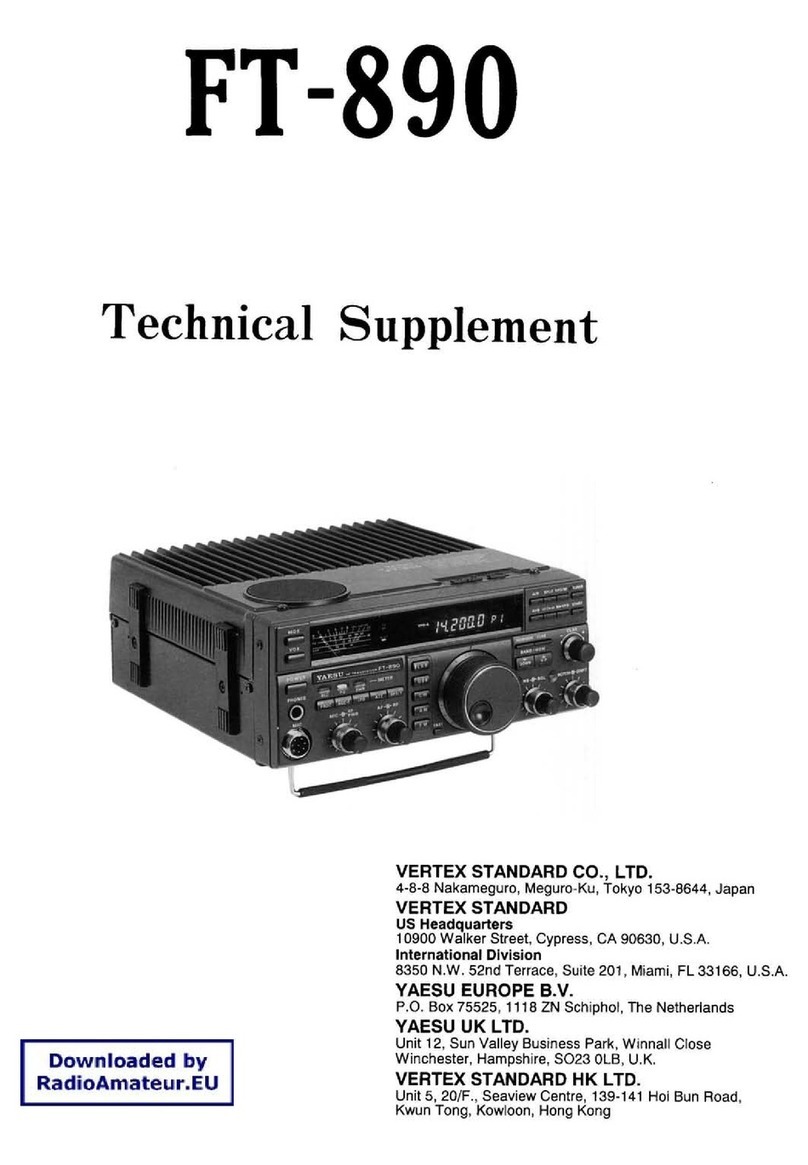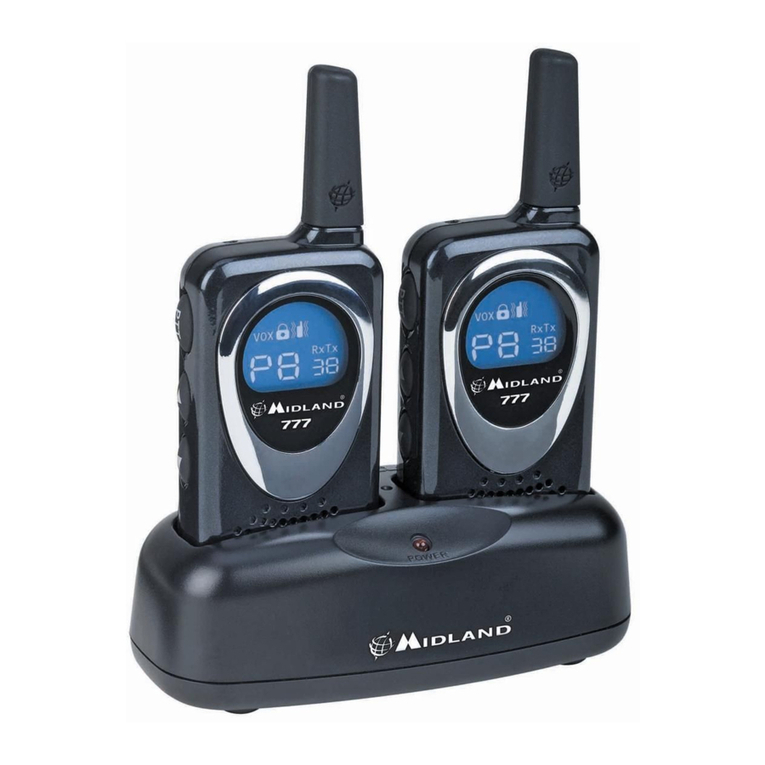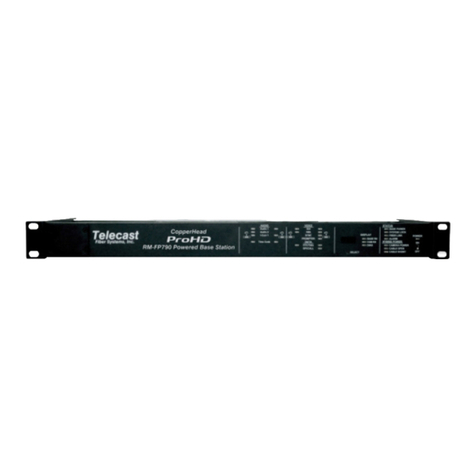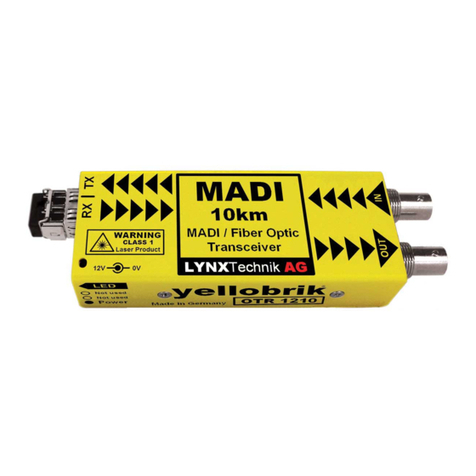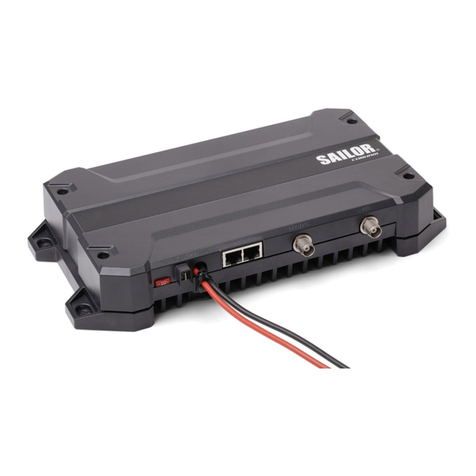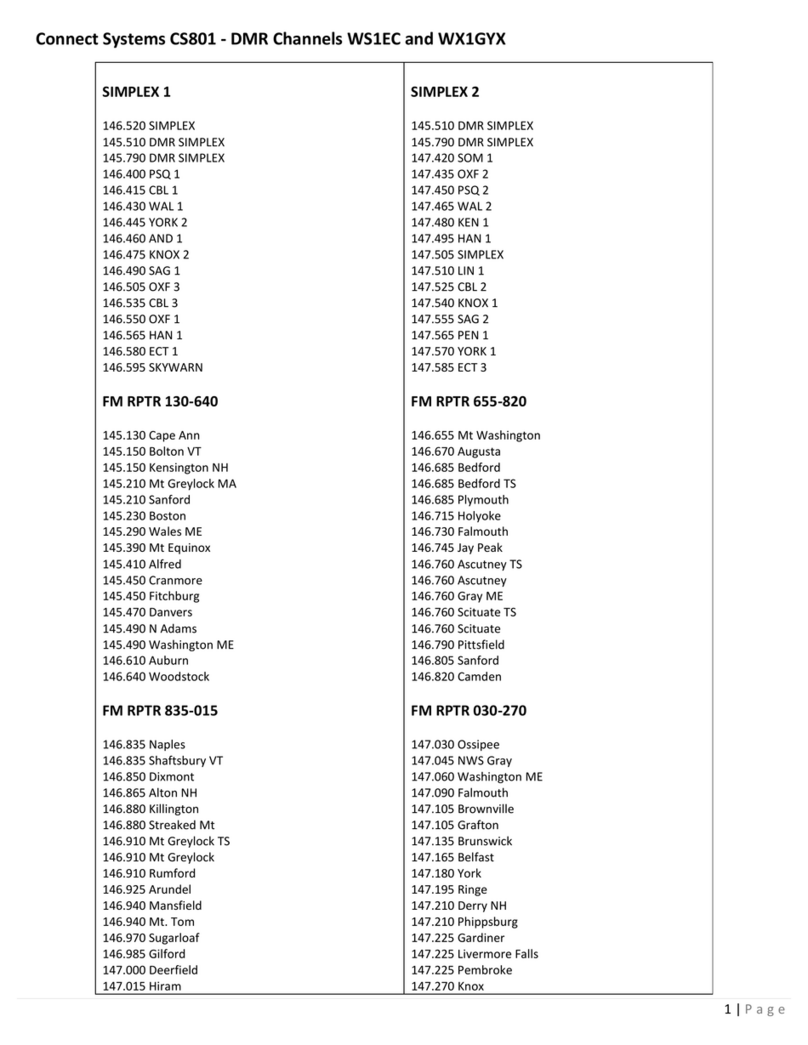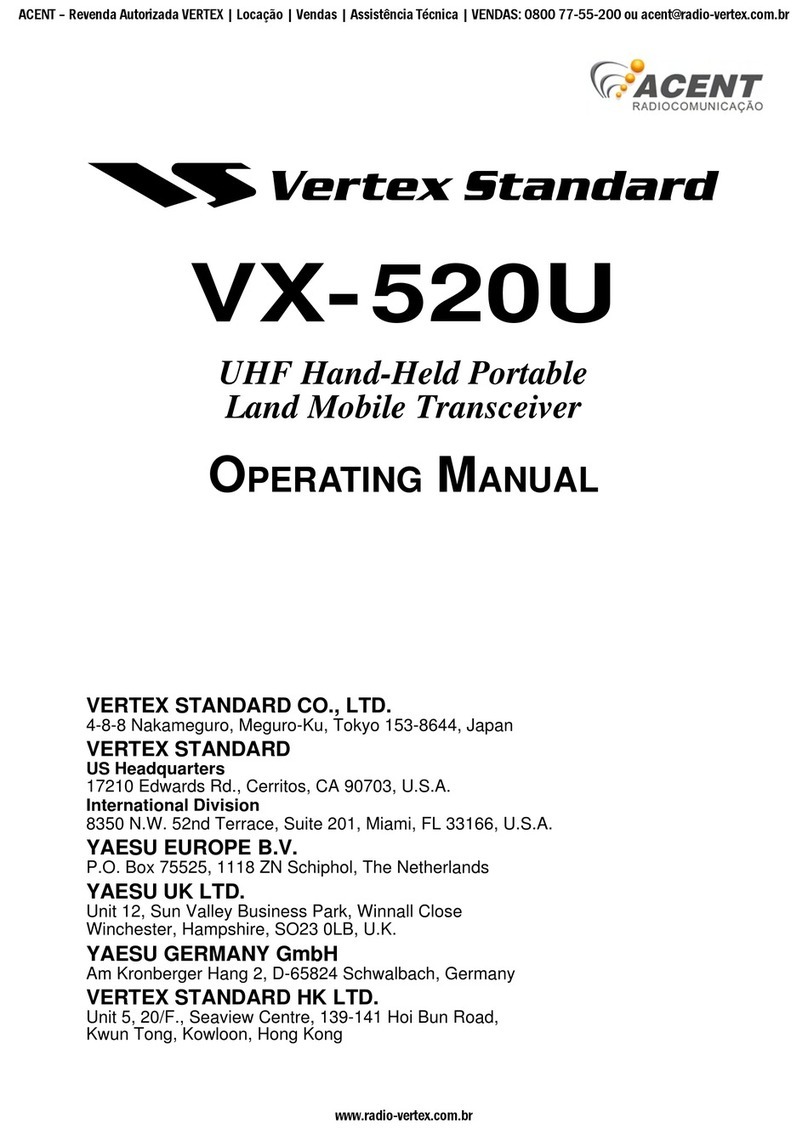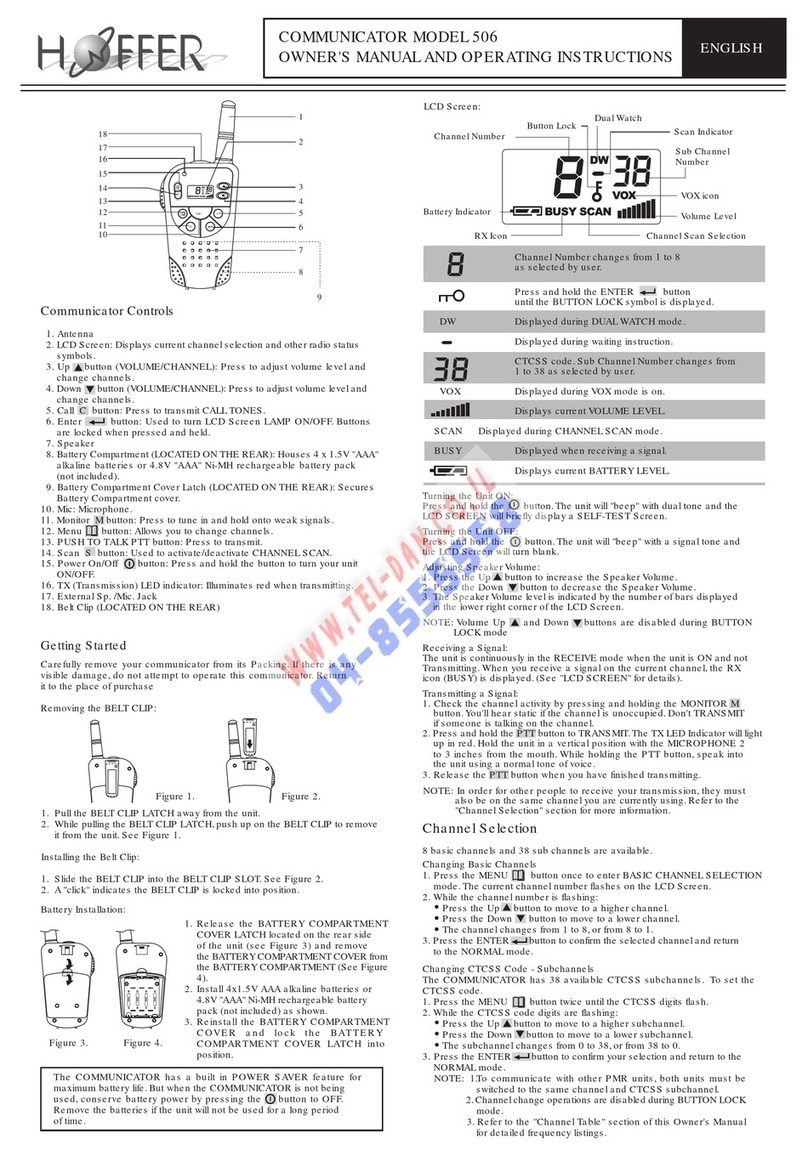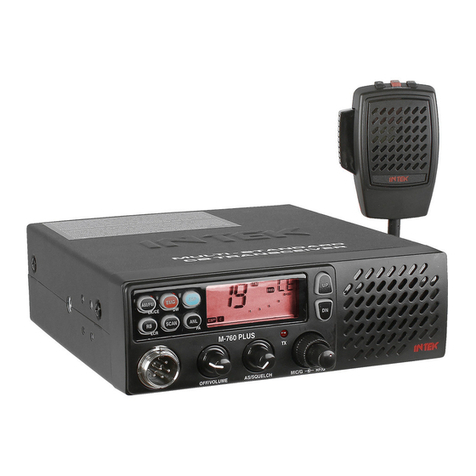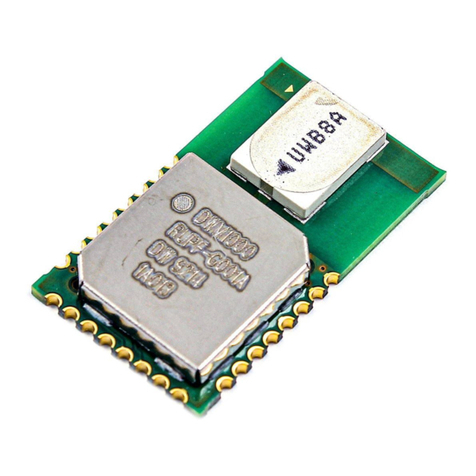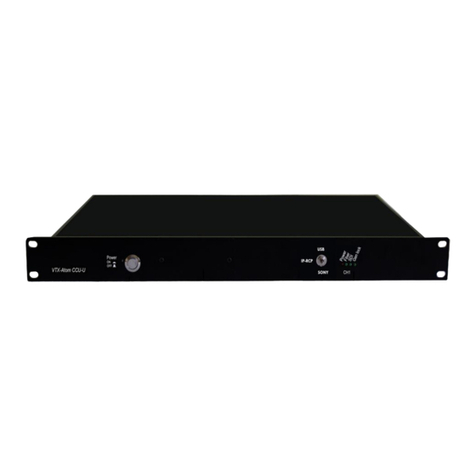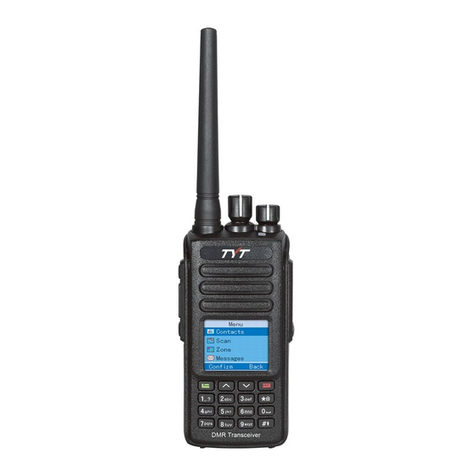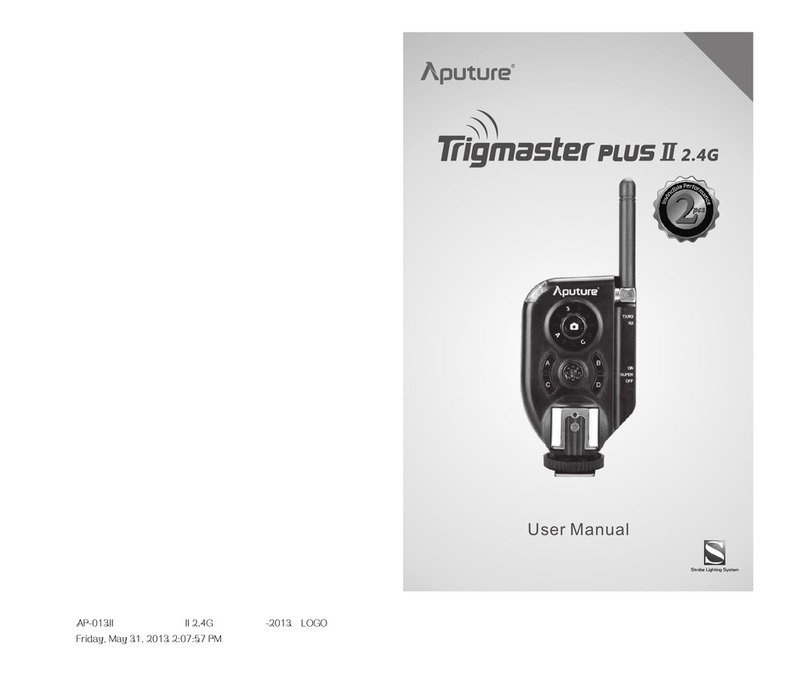BENDIXKing KX 99 User manual

ODerator’s
Manual
Kx
99
Handheld
Aviation Transceiver

Table
of
Contents
Introduction
.........................................................................
2
General Information
Equipment Description
.............................................................
3
License Requirements
..............................................................
3
Antenna Requirements
.............................................................
4
NickelCadmium (NiCad)Battery Pack
.....................................
5
Alkaline BatteryPack
................................................................
5
Battery Pack Installationand Removal
.....................................
6
HeadphoneIMicrophone Adapter
..............................................
6
Low BatteryIndicator
................................................................
6
KX
99
Controls
TopControls
............................................................................
8
Front Controls
...........................................................................
9
Side Controls
.........................................................................
10
KX
99
Operation
Basic Communications Operation
.........................................
11
VOR
NavigationModes
.........................................................
11
Basic NAV CDIMode
............................................................
12
Course Selection(Changingthe OBS Setting)
......................
12
Centering the CDIwith aTO Indication
.................................
13
Centeringthe CDIwith a
FR
(From) Indication
.....................
13
Displaying Bearing
to
the
VOR
Station
..................................
14
Displaying Radialfrom the
VOR
Station
................................
14
ProgrammingMemory Locations
1-9
....................................
15
RecallingMemory Locations
.................................................
16
Duplex Operation
...................................................................
16
Scan Modes
...........................................................................
17
Memory Scan
........................................................................
17
Memory Lockout
....................................................................
18
FrequencyScan Mode
..........................................................
18
Priority Mode
.........................................................................
19
PriorityProgramming
.............................................................
20
NOAA Weather Radio Channels
...........................................
20
KX
99
Accessories
............................................................
27
In Case Service
Is
Required
......................
InsideBackCover
Specifications
.......................................................
Back Cover
1

Introduction
This manual containsinformation
relative
to
the operationand program-
ming
of
the
KX
99
Transceiver.
It
is
bestto reviewthe entire manual
beforeattempting use
of
the
KX
99.
However, personswho require imme-
diate communications capability but
do not havetime to study the entire
manualcanbeginon page
1,
Basic
CommunicationsOperation.
Informationon availableaccessory
items iscontainedinthe
last
section
of
this manual.
2

General Information
This
section contains
a
basic
description
of
the
KX
99
Transceiver
as well as suggestions and factors to
consider beforeusingthe KX
99.
Close adherence
to
thesesugges-
tions
will
assure a moresatisfactory
performancefrom the equipment.
EquipmentDescription
The KX
99
isa 760 channel,
hand-heldVHF aircraftcommunica-
tions transceiver with a
1.5
watt
transmitter output. Inaddition, the
KX
99
iscapableof receiving
200
Nav
channels andall
7
NOAA Weather
Radio Broadcast channels. While
audio is receivedon all
200
Nav
channels, localizerinformationis not
processedon the 40 localizer
frequencies. VOR informationis
processedand displayedon the liquid
crystaldisplay(LCD) ineither a radial,
bearing,
or
Course DeviationIndicator
(CDI) left-rightinformationformat.The
KX
99
containsa single receiver.
Therefore,
it
cannotperform the
COMMfunction and the
NAV
function
simultaneously.
The unit ispoweredby a self-
containedbatterypack. Frequencies
andfeatures are enteredvia the
keypadon the front of the unit.The
keypadanddisplay may be illumina-
tedfor night use. Power On/Off,
volume, squelch sensitivity,keyboard
lockout, and transmitter lockout
controlsare locatedon the top of the
unit. Jacks for headphone and
microphone are also locatedonthe
top of the unit. The flexibleantenna
may also be removed
so
the unit may
be usedwith an external antenna.
License Requirements
If
the KX
99
Transceiveris
to
be
utilizedinan aircraftan Aircraft Radio
StationLicenseis required.
If
the
transceiveris
to
be usedas a ground
station, then a GroundStation
Authorizationis required. Included
with the KX
99
are a FCC Form
404,
Application for Aircraft RadioStation
License anda FCC Form406,
Application for GroundStation
Authorizationinthe Aviation Services.
Additionalcopiesmay be obtainfrom
your nearestFCC FieldOffice.
This equipment hasbeen
acceptedby the FCC and enteredon
their listof Type Accepted Equipment
as King Radio CorporationModel
KX
99,
(ASY7BLKX
99).
Caution:
The VHF transmitter in this
equipment is guaranteed to meet
FCCacceptanceover the operating
femperaturerange only whena King
crystal is used in the stabilizedmaster
oscillator. Use of other than
a
King
crystal is consideredan unauthorized
modification,and will void the
warranty.
3

Antenna Requirements
The flexible antenna that is
includedwiththe KX 99 isvery
convenientand may be usedfor both
communicationsand navigation
purposes. However a moreefficient
antenna may be requiredfor some
applications. For maximum utilization
of the
KX
99 insidean aircraft,
automobileor other metalenclosure,
an externalCOMM antennashould be
used for communicationsand an
externalNAV antenna should be used
for navigation.An externalcommuni-
cationsantennawill noticeably
improvethe receptionandtransmis-
sion
of communicationradiosignals;
however,it is not recommendedfor
receivingnavigationsignals.The use
of
a horizontaltype navigation
antennawill improvethe reception
andthe directionalcharacteristics
of
the navigationsignal but it isnot
recommendedfor communications
transmissionsfrom the KX 99. The
BNCtype connector,locatedonthe
top
of
the unit, isstandardfor useon
aircraftradios and antennas
so
little
difficultyshould beencounteredwhen
connecting
to
an existingaircraft
communicationsor navigationan-
tenna.
VOR navigationsignalsare
receivedbestby a horizontalantenna
while communications signals are
receivedbestby a verticalantenna.
This isa good pointto keep inmind
when trying
to
receiveweak signals.
When usingthe flexibleantenna inthe
cockpit
or
an automobile,
try
to
place
the antenna inthe center of awindow
which isfacingthe stationyou are
trying
to
receive.Remember,
if
the
receivedstationisweak and noisy,
that stationisnotlikelyto hear your
transmission.Obtainthe best received
signal beforeattemptingto callthe
station.
When the KX 99 is
to
be used as
an emergency backupComm or Nav
radioinan aircraft,one
or two
antenna
adapters
(P/N
071
-01443-0001)
may
be installed
to
easily connectthe
KX 99 to the existingaircraftantennas.
See
diagram
below.
4

Nickel Cadmium (NiCad)
Battery Pack
The standard power source
suppliedwith the
KX
99
is
a
9.6
volt,
720
mA hour, rechargeable nickel-
cadmium batterypack. The battery
that isshippedwith the
KX
99 will not
befully charged andshouldbe
charged prior
to
use.
If possible, the battery shouldbe
fully dischargedbeforerecharging.
This will maintainthe maximum useful
charge inthe batteryandavoid
"memory"problemsassociatedwith
thistype battery.
A
characteristicof
NiCadbatteriesisthat they do not
holdtheir chargefor longperiodsof
time such as an alkalinebatterydoes.
Caution:
Do
notstore a dischargedbattery
pack. Battery cellpolarity may
reverse making it impossiblefor the
battery
to
fullyrecharge.
Do
not storea battery pack whereit
might be accidentallyshorted. The
current capabilityis tremendous.
Do
not crushor disassemblea
NiCad battery pack. Thereare toxic
chemicals inside.
Do
not disposeof thebatterypack
in a fire. It may explode.
Do
not exceed the recommended
quick charge current.Useonly the
approved chargers.
The
KX
99 comes standardwith
atricklecharger capable
of
operating
on either
11
5V or 230V.
To
charge
the battery; plugthe charger module
intoan appropriate wall outletand
plugthe other endintothe connector
marked"CHRGwhichislocatedon
top of the
KX
99.
It
takes approxi-
mately
12
hours
to
fully charge the
NiCadbatterypack.
Caution:
Toavoidpossible damage
to
theKX
99
make absolutelycertain
that the
7
15V/230V
selectswitch
located
on
thetricklechargeris in the
correctposition for the voltage
to
be
used.
The amount of time that the
NiCadbatterypack will power the
KX
99 on one chargedependson a
number of factors:
The dutycycle (amount
of
timethe
unit istransmittingversustime
receiving
a
signalversus squelched
standby operation).Transmitting
dischargesthe batteryfastest.
The volume levelof the received
signal.
The temperature.
A
colder battery
will not last as long.
'
The followingtable shows the
approximatelifeof afully charged
NiCadbatteryat severaldifferentduty
cycleswith midlevelvolume andthe
batteryat roomtemperature.
LIFE (Hrs)
STBY
Yo
REC
Yo
TX
Yo
7.0
95
3
2
5.3 90
5
5
4.1
25
70
5
3.8
80
10
10
2.4
60
20
20
Alkaline Battery Pack
An optionalreplaceablecell
alkalinebatterypackis availablefor
the
KX
99.
Alkaline batteriesare used
for radiosthat are maintainedfor
emergency purposesbecausethey
have extremely longshelf lifeand no
maintenanceis required.
ALKALINE
BATTERY PACKSARE NOT TO
BE
RECHARGED!
5

The alkaline battery pack holds
8
'AA"
sizecells. To gain access
to
the
8
cells,first removethe batterypack
from the KX
99
(seebelow).Next,
with one handholdingthe outsideof
the batterypackcase, usethe other
hand
to
pressdown firmly on the
centerhubon the top of the case.
The batterycell holderwill slide out
the bottomof the case.
Alkaline batterylifewill be
approximatelythe same as that
of
a
NiCadfor a
90%
STBY,
5%
REC
and
5%
TX
duty cycle. However, alkaline
battterylife will beconsiderablyless
than a NiCadat higher duty cycles
and considerablygreaterthan a
NiCadat lowerdutycycles.
Battery Pack Installationand
Removal
To installthe batterypack (either
NiCador alkaline), locatethe center
hub onthe top of the batterypack into
the recessonthe bottomof the unit.
Positionthe batterypackat a
30"
offset
so
that the two metalstudson
the battery packgo intotheir respec-
tive recesseson the bottom
of
the
unit. Apply upwardpressure
to
the
pack while twistingthe pack
so
that
it's sides are flush with the sides of
the unit. The metal tab on the side of
the unitwill lock the packinto position.
To
removethe battery,turnthe
radio
off.
Press uponthe metaltab on
the sideof the unitwhile twistingthe
batterypack
30"
and remove it from
the radio.
See
figure
below.
Low
BatteryIndicator
The KX
99
hasa low battery
indicator"beep" tone that
will
signal
the user when the battery
is
almost
unusable.
HeadphonelMicrophoneAdapter
Externalheadphone and
microphonejacks are locatedontop
of the
KX
99.
The suppliedhead-
phone/microphoneadapter allows
standardaircraftheadphonesand
microphones
to
be usedwith the
KX
99.
The clipon the adapter should
beconnected
to
the protrudingattach
point
on
the rightsideof the unitto
providestrain relief.
If
a headset with
a boommikeis used, the transmit key
buttonon the side of the
KX
99
may
be used
to
key the transmitter.A
separate push-to-talkswitch may also
be usedwith the headphonelmicro-
phoneadapter.
6

KX
99
Controls
SPEAKER
MICROPHONE
7

Top
Controls
A.
OnlOffNolume Knob
Turningthe knobclockwisefrom
the
OFF
positionturns the uniton
andincreasesthe speaker volume
as clockwiserotationiscontinued.
B.
Squelch Sensitivity Adjustment
When the squelchcontrolisturned
counterclockwise
to
the stopthe
squelchiscompletelyopen and
receivernoisecan be heardover
the speaker. Turningthe squelch
controlclockwiseuntilthe receiver
noise isjust eliminatedfrom the
speaker will causeonly received
transmissions
to
be heardover the
speaker. The squelchcontrol
mustbeset
to
tune out the
receivernoisefor the scanning
function
to
be operational.The
squelchcontrolshouldbefully
counterclockwisefor WX channel
operation.
C. Antenna BNC Connector
The flexible rubberantennaor an
externalantenna isconnected
to
this
connector.
D.
Wall Charger Input Jack
The externalwall charger plugs
intothisjack
to
rechargethe
NiCadbatterypack providedwith
the unit.
Do
not attempt to use this
jack
to
recharge the optional
replaceable alkaline batterypack
since damage
to
the unit
could
occur.
E.
HeadphoneJack
When a headphone is used, the
headphone connector
of
the
headphone/microphone adapter is
pluggedintothisjack.
Also,
an
earphone or anexternalspeaker
havinga
2.5
millimeter,
2
conduc-
tor plugmay be pluggeddirectly
intothisjack. The internalspeaker
isdisabledwhen thisjack isbeing
used.
F.
Microphone
When a headset havinga boom
mikeisusedor an external
microphoneis used,the micro-
phoneconnector
of
the head-
phone/ microphone adaptor is
pluggedintothisjack. Also, an
externalmicrophonehavinga
3.5
millimeter,
3
conductor plugwith
the tip
of
the connector connected
to
the mikekey lineandthe ring
connected
to
the microphone
audiomay be pluggeddirectlyinto
thisjack.
G.
Transmit Lockout Button
The transmitteris disabledwhen
the Transmit Lockoutbuttonis
pressedin. To reenabletrans-
mitteroperation,depressthe
buttonagain
so
it is inthe "out"
or
"up" position.
H. Keyboard Lockout Button
When the Keyboardlockoutbutton
is in
to
the "in" position, no inputs
from the keyboardwill be ac-
cepted. To reenablethe keyboard
depressthe keyboardlockout
buttonagain
so
it is inthe "up" or
8

FrontControls
1.
Numeric Keys
'
The numeric keysonthe keyboard
are used
to
enter frequenciesinto
the KX
99.
For example, entering
the numbers
1
+
2
+
6
+
5
+
2 in
sequentialorder would enable the
unit
to
receiveand transmit on
126.525MHz. Numeric buttons
3,
6 and
9
are also used inconjunc-
tion with the 2ND (2ndfunction)
button
to
controlthe navigation
display.
Their
use
is explained
below.
j
L. WX (Weather Key)
Pressingthe WX key andany of
the numerickeys
1
through
7
will
enablethe unit
to
receive NOAA
NationalWeather ServiceBroad-
casts on any of the
7
weather
channels.
AUTO FR (Auto From)
Pressingthe 2ND key followed by
the AUTO
FR
key (2ndfunctionof
the
WX
key)when a valid
VOR
signal isbeingreceived, automati-
cally selectsthe OBS settingthat
centersthe CDIwith a FROM
indication.
J.
2ND
(Second Function Key)
Depressingthe Second Function
key andthen any of the seven
keyson the keyboardwith dual
functions will enable the second
functionof the keypressed.
K. PRI (Prlorlty Key)
Pressingthe PRI key causesthe
unit
to
monitor the PriorityFre-
quency for any activityonce every
second. Depressing the PRI key
again while in Priority mode will
cause the unit
to
exit Priority
mode.
AUTO TO
Pressingthe 2ND key followedby
the AUTO
TO
key (2ndfunctionof
the
PRI
key)when a valid
VOR
signalis beingreceived, automat-
ically selects the OBS settingthat
centers the CDIwith a
TO
indicaiton.
M.
SCN (Scan Key)
Depressingthe SCN key enables
the frequency scan mode.
Depressingthe key againwhile in
the frequency scan mode will
cause the unitto exit the scan
mode. This key isalso usedin
conjunctionwith the memory scan
mode.
LOCKOUT
Pressingthe 2ND key followedby
the LOCKOUT key (2ndfunctionof
the SCN Key) causesthe dis-
playedmemory channel
to
be
skippedinthe memory scan mode.
N.
CLR (Clear Key)
Depressingthe CLR key clearsthe
displayof any partialor erroneous
entriesandwill causethe unit
to
displaythe lastvalidentry.
9

0.
MEM
(Memory Key)
Depressingthe
MEM
key andthen
any numerickey
0
through9 tunes
the
KX
99
to
the frequency stored
inthat memory location.
PRO (Program Key)
Pressingthe 2ND keyfollowedby
the PROkey (2ndfunction of the
MEM
key) putsthe
KX
99
inthe
programmode. The displayed
frequency isthenprogrammed
intothe desired memory channel
by pressingthe appropriate
numerickey.
P.
ERG
(Bearing Key)
Pressingthe 2ND key followedby
the
BRG
key (2ndfunctionof
3
key) causesthe bearing
to
the
tuned
VOR
to
bedisplayed.
0.
RAD
(Radial Key)
Pressingthe 2ND key followedby
the RAD key (2ndfunction
of
the
6
key) causesthe radialfrom the
tuned VOR
to
be displayed.
R.
OBS
(Omnibearing Selector
Key
1
Pressingthe 2ND key followedby
the
OBS
key (2ndfunctionof the 9
key)causesthe existing
OBS
settingfor the tuned VOR
to
dash.
The new
OBS
settingis now
selectedby enteringthe desired
three number setting. For ex-
ample, enteringthe numbers
0
+
2
+
5
insequentialorder
would cause the 25"
OBS
setting
to
be selected.
Side
Controls
S.
Microphone Key
(Push-to-Talk)
Enablesthe unitto transmit on the
selectedfrequency
if
it
isa valid
communications channel.
T.
DisplayLamp Switch
When the display lamp switch is
depressedthe keyboardandthe
display are illuminatedfor easy
night viewing. The lamp
will
remainon as longas the switchis
depressed.
Note:
Themicrophone
is
located
to
theright side of the speaker (see
diagramon Page
7).
For maximum
transmitclarity
hold
mouth
approxi-
mately
1/4
inch from microphoneand
speak in a normal tone of voice.
10

KX
99
Operation
Basic Communications Operation
With achargedbattery pack
attachedand an antenna installedon
the unit, turn the OnlOffNolumeknob
to
the
ON
position.The unitwill
display the last frequency entered
when the unitwas turnedoff. This
frequency isset at 118.00MHz at the
factory. With the squelch adjusted
completely open (counterclockwise)
adjust the volume
to
acomfortable
level. To eliminate the receiver noise
inthe speaker adjust the squelch
controlclockwise just enough untilthe
speaker becomes quiet. Frequencies
may now be entered via the keyboard.
NOTE:
Be sure the keyboardlockout
button
is
in the
”up”
or ‘but”position
or the unit will not accept entries from
the keyboard.
Enter afrequency by pressing
the five desiredkeysstartingwith 1for
the1003 MHz. After the
1
has been
entered, dashes
will
appear for the
remainingfour digits. The dashes
remain untileach of the remaining
digitsisentered. Eachdigit ischecked
for validity when enteredand invalid
digitswill
not
be allowed. Pressingthe
CLR
key
will
clearany digitsthat have
been enteredand restorethe last
validfrequency that was entered.
For example, to selectthe
frequency 126.525MHz enter the first
five numbers of the frequency.
Depress the keys
on
the keyboardin
the followingorder:
The unitwill now transmitand.
receiveon 126.525MHz.
P6.W
I
NOTE:
The unit will not transmit
if
the
transmitter lockout button is pushed
in.
To
transmit,the transmitterlockout
button must be in the “out”or
“up”
position.
To change frequencies,simply
enter the firstfive numbers
of
the new
frequency.
7
VOR
Navigation
Modes
The
KX
99
navigationmodes are
validonlv for
VOR
freauencies
between108.00MHz and 117.95MHz.
If
a localizer frequency isselected, the
letters
“LOC
are displayedbutno
navigation informationisdisplayed.
However, audio is stillavailable onthe
localizerfrequencies.
11

Basic
NAV
CDI
Mode
To entera
VOR
frequency
(115.90MHzfor example) pressthe
keyson the keyboardinthe following
order:
I
I
II
I
I
I
I
Il1'14
II
I
I
I
I
I
I
I1
oesl
15.90
When a
VOR
frequency
is
selectedthe displayshows the
frequency, the lastselectedcourse
(085) anda Course DeviationIndica-
tor
(CDI).
Whenthe selected
VOR
stationis not beingreceived,a flagged
condition
is
indicatedby the
CDI
bars
extendingacross the entire length of
the top of the display andthe absence
of a
TO
or FR annunciationabove the
selectedcourse.
I
'1'1
I
I
1
This display indicatesthat
a
VOR
signal isbeingreceived. The
"TO-FR"
annunciator
is
indicating"TO", the
selectedcourse is 85 degrees andthe
CDIindicatesthat the course is
to
the
rightof the aircraftthree degrees. Full
scale CDIdeviationis 10degrees
(1
0
tick marks leftor rightof the center).
Course Selection (Changing the
OBS
Setting)
Enter avalid navigationfrequency
as previouslydescribed. The display
will
show the frequency, the last
selectedcourse, andthe CDI.
Depress the keysinthe following
order:
1-q
I
I
I
I
II
I
I
I
I
l+l
II
I
I
I
I
I
I
I
I
-_-
IU8.UO
The
OBS
window will now display
three dashes andwill acceptany valid
OBS
settingbetween
0"
and
360".
To
enter a valid course three digits must
be entered. For example:
to
enter a
course
of
0",
000
would have
to
be
entered. To enter a course of
5",
005
would
have
to
be entered.
To enter acourse of
90"
depress
the keyson the keyboardinthe
followingorder:
The
OBS
window will display the
selectedcourseof
090".
If
avalid
navigationsignal is beingreceivedthe
coursedeviationindicator
will
display
deviationfrom the selectedcourse of
90" andthe appropriate
TO
or
FR
(From) indication
will
bedisplayed
above the
OBS
window. The figure
on page
13
shows the aircraft
to
be
rightof the
90"
selectedcourse. With
the selectedcourse
of
90°
the
deviationfrom the selectedcourseis
5".
The 5" deviationwill be indicated
by the
KX
99 CDI as shown inthe
display below.
i90
108.00
12

Centering the CDIwith a
TO
Indication
While a VOR signalis being
received, pressingthe 2ND key
followed by the AUTO TO key will
activate the Auto Course Mode and
automatically center the CDI (Course
DeviationIndicator)with the "TO
annunciator displayed. The
OBS
settingisthen latchedand the CDI
operates inthe basic NAV CDI mode.
Note:
Waitapproximately
10
seconds
after selecting a new NAV frequency
beforeusing the
AUTO
TO
featurein
order to allow the
NA
V
filters to settle.
b
For example,
to
center the CDI
below with a "TO"indicationpressthe
following
keys:
(Before pressing)
I
I
(After pressing)
I
I
Centering the
CDI
with
a
FR
(From)
Indication
While aVOR signal
is
being
received, pressingthe
2ND
key
followed by the AUTO
FROM
key will
activatethe
Auto
Course Modeand
automatically center the CDI (Course
DeviationIndicator)withthe "FR"
(From)annunciator displayed. The
OBS
setting isthen latchedand the
CDIoperates inthe basicNAV CDI
mode.
Note:
Wait approximately
10
seconds after selecting a new NAV
frequency before using the
AUTO
FR
featurein order to allow the
NAV
filters to settle.
For example,
to
centerthe CDI
below with "FR" indicationpressthe
followingkeys:
(Before pressing)
I
(After pressing)
I
I
13

Displaying Radialfromthe
VOR
Station
The radialtracking mode is
activatedby first selecting a
VOR
frequency and then pressingthe 2ND
key followedby the RAD key. The
CDI will no longerbe displayed.
A
"FR"
(From)annunciationisdisplayed
above the
OBS
window. The radial
from the
VOR
station is displayedin
the
OBS
window. The radialdis-
played
in
the
OBS
window will
change as the aircraft changes
positionwith respectto the
VOR
station.
For
example,
to
enter the radial
tracking mode press the following
keys:
RAD
w+
E]
(Beforepressing)
(After pressing)
7
If
a valid
VOR
signal is not being
received,a flagged conditionis
indicatedby dashesbeingdisplayed
inthe
OBS
window and no
"FR"
annunciationbeingdisplayed.
Displaying Bearing to the
VOR
Station
The bearingtracking mode is
activatedby first selecting a
VOR
frequency and then pressingthe 2ND
key followedby the BRG key. The
CDI will nolongerbedisplayed.
A
"TO"
annunciationisdisplayedabove
the
OBS
window. The bearing
displayedinthe
OBS
window will
changeas the aircraft changes
position with respectto the
VOR
station.
For
example,
to
enter the bearing
tracking modepressthefollowing
keys:
BRG
pa+
(31
(Before pressing)
(After
pressing)
If
a valid
VOR
signal is not being
received,aflaggedcondition
is
indicatedby dashesbeingdisplayed
inthe
OBS
window and no "TO"
annunciationbeingdisplayed.
14

ProgrammingMemory
Locations
1-9
Ten memory locationsexist
so
that frequently usedfrequencies can
bequicklycalled up and
so
that these
same frequencies may be scanned in
the memory scan mode.
Any frequency from 108.00
to
136.975 (135.975 on P/N069-1026-00
versionunits)may be enteredintoany
of the ten Memory Locations, num-
bered
0
through 9. Memory Location
0
is reservedfor duplex operation.
Duplex operation istransmittingon
onefrequency and receivingon
another frequency.
If
duplex operation
is notdesired,memory location
0
may
also be programmedwith a single
frequency. Refer
to
the section
entitledDuplex Operation. To enter a
frequency intoMemory Location 1
through
9
the frequency must first be
entered andthen storedintothe
desired Memory Location. For
example,
to
enter the frequency
118.90MHz intoMemory Location1
:
Firstthe desiredfrequencymust
beentered. Press the keys onthe
keyboardinthe followingorder:
Now that the desiredfrequency
hasbeenentered, it now must be
storedinMemory Locationnumber 1
as desired. Press the keysonthe
keyboardinthe followingorder:
The frequency enteredwill now
be displayedinthe frequency window
andthe Programmode will be
annunciatedby "Pro" beingdisplayed
inthe OBS window. To storethe
frequency 118.90MHz intoany
Memory Location1through9 press
the correspondingnumber for that
Memory Location. Example:
To store in Memory Location1
pressthe 1key onthe keyboard,
to
storein Memory Location
2
pressthe
2
keyonthe keyboard,and
so
on. In
this case pressthe number
1
key on
the keyboard. An M alongwiththe
Memory Locationnumber will be
displayedonthe leftside of the
display indicatingthe frequency
window isdisplayingthe frequency
storedinthat Memory Location. The
frequency, 118.90MHz, is now
permanently storedin Memory
Location
1
until it is reprogrammed.
15

Recalling Memory Locations
Any of the frequenciesfrom the
ten memory locationscan be recalled
by simply pressingthe MEM key on
the keyboardfollowedbythe corre-
sponding Memory Location. For
example, pressing MEM andthen the
1
key
will
recallthe frequencystored
inMemory Location1.
To
recallthe frequency previ-
ously storedin Memory Location
1
pressthe keysonthe keyboardinthe
followingorder:
p4+p-]
The displaywill now show Mand
1
onthe left side of the display
indicatingthe frequencyin Memory
Location
1
isbeingdisplayed.The
frequency window
will
display
118.90
as storedinthe previoussection.
(Before pressing)
7
125.60
(After pressing)
1;
I
If3.90
I
Duplex Operation
Duplex operationallowsthe unit
to
receiveon onefrequencyand
transmit on another. An example of
when duplex operationmay be used
is
when transmitting
to
a FlightService
Station
(FSS)
on 122.10MHz and
receivingthe FSSover a navigation
frequency such as 111.OOMHz.
Memory Location
0
hasbeenreserved
for this feature. Induplex operation
the
receivefrequency
is
entered
and
storedfirst, then the transmitfre-
quency
is
enteredandthenstored.
For example:
To enter a receivefrequency of
1
11.OOMHz andatransmitfrequency
of 122.1OMHz pressthe keysonthe
keyboardinthe followingorder:
The frequency 11
1
.OOMHz will
now be displayedinthe frequency
window alongwith the appropriate
CDI indication.Press the keysonthe
keyboardinthe followingorder:
The CDIdisplay will be removed
and M and
0
will
bedisplayedon the
leftside
to
the display.The program
annunciation"Pro"will stillbedis-
playedinthe
06s
window andthe
frequency window willdisplay dashes.
16

The transmit frequency of 122.10MHz
may now beentered. Depressthe
keysonthe keyboardinthe following
order:
I]
+12)
+Fl
+Fl
+I1
Two seconds after a valid
frequency has beenentered the
display
will
revertback
to
the receive
frequency and any appropriate
CDI
indication. The transmit frequency
may bechecked by momentarily
depressing the MikeKey buttonon
the side of the unit. The frequency
window will display the transmit
frequency any time the unit
is
transmitting.
Scan
Modes
The scan modesallow the user
to
sequentially stepthrough a group
of frequencies
to
find an active
frequency. When atransmissionis
received, the radiowill stop scanning
and remainonthat frequency untilthe
activity stops. After the frequency has
been inactive for 2 seconds, the scan
process
will
resume. There are 2 scan
modes, memoryscan and frequency
I
I
I1
I
111
I
11’1’1
I1
I
I
II
I
I
11
;;
0901
I
1.00
For memory location
0
to
receive
and transmit onthe same frequency,
the frequency must be enteredfirst as
the receivefrequency andthen again
as the transmitfrequency.
scan. Beforeinitiatingeither scan
mode it is importantto havethe
squelchknobproperlyadjustedsuch
that the backgroundnoise inthe
speaker isjust eliminated.That is.
any further counterclockwiserotation
would cause the backgroundnoiseto
return.
If
the unit is keyedduringscan
operationthe scan will bedisabled
and the unit stay tuned to the
frequency itwas tuned
to
when the
unit was keyed.
Memory
Scan
To enable the scanning of
Memory Locations
0
through
9
depress the keysonthe keyboardin
the followingorder:
FI+ISCNJ
The unitwill now beginscanningthe
frequenciesstoredinMemory
Locations
0
through
9
that have not
been lockedout. An
“S”
will
be
displayedinthe lower rightside of the
display to indicatea scan mode has
beenactivated.
The Memory Scan mode can be
cancelledby againpressingthe MEM
key followedby the
SCN
key.
17

Memory Lockout
Memory Lockoutappliesonly
to
the Memory Scan mode and notthe
FrequencyScan mode. Any of the 10
Memory Locationscan be omitted
fromthe scanningsequence. The
memory locationis first displayedin
the frequencywindow andthen
lockedout. For example,
to
lockout
the frequencystored in Memory
Location2 depressthe keys on the
keyboardinthe followingorder:
I
1
1;
lZ3.50
I
The frequencywindow will now
displaythe frequencystored in
Memory Location
2.
An M and a
2
will
bedisplayedon the left handsideof
the display indicatingthat the
frequency stored in Memory Location
2 is beingdisplayed. Continue to
depress the keyson the keyboardin
the followingorder:
An Lwill now appear inthe lower
rightcorner of the display
to
indicate
that the frequency storedin Memory
Location
2
has beenlockedout of the
scan sequence.
To
restorea locked
out Memory Location
to
the Memory
Scan sequence, performthe same
sequence as above andthe memory
locationwill be returned
to
the scan
sequence andthe
"L"
will be removed
from the display.
FrequencyScan Mode
The FrequencyScan mode
scansthe frequencyrangein25 KHz
stepsbetweenthe frequencystored
in Memory Location 1and the
frequency storedin Memory Location
9.
Only COMM frequencies
(118.00MHz-136.975MHz) may be
scannedinthe Frequency Scan
mode. For example
to
scanthe
frequencyrangeof
120.00
MHz
to
124.50MH2,
120.00
must first be
stored inMemory Location 1and
124.50 mustbestored in Memory
Location
9.
Refer
to
the section
entitled"ProgrammingMemory
Locations
1-9
for storing 120.00 and
124.50
inthe appropriatememory
locations. After the frequencies have
beenstored, depress the following
key on the keyboard:
120.00
An
S
will appear inthe bottom
right corner of the display indicating
the Scan mode has beeninitiated.
The unitwill start scanning through
the frequency range in25KHz steps
to
124.50MHz. When the frequency
window gets
to
124.50itwill resetand
start countingat 120.00 again.
18

To exitthe Frequency Scan
mode at any time, simply depress the
SCN
buttonon the keyboardagain.
If
the unit
is
keyedduringscan opera-
tion the scan optionwill bedisabled
andthe unitwill remain tuned
to
the
frequency itwas tuned
to
when the
unit was keyed.
If either Memory Location 1or
Memory Location9 contains a
navigation frequency (108.00 MHz
to
117.95MHz) the scan limitwill bethe
appropriate end of the communica-
tions band. For example,
if
Memory
Location1has a navigationfrequency
storedinit the scanwill beginat
118.00MHz and
if
Memory Location9
has a navigationfrequency storedin it
the scanwill resetwhen it reaches
136.975MHz
(1
35.975MHz on KPN
069-1026-00versionunits).
Priority
Mode
When the Priority mode of the
KX 99 isenabled the unit
will
check
the Priority frequency once a second
for any activity.
If
any activityis
presenton the Priority frequency the
receiver
will
stay tuned
to
the Priority
frequency untilthere is noactivityfor
2
seconds. Keyingthe transmitter
within
two
seconds after the last
transmission onthe Priority frequency
will disable the Prioritymode. The
Priority mode cannot be enabled
if
a
navigation frequency iscurrently
displayed. (1
08.00
MHz
to
117.95MHz).
A
navigationfrequency
cannot beprogrammed as the Priority
frequency.
To
enable the prioritymode
press
the
followingkey onthe
keyboard:
The frequency window will now
display the frequency that was selec-
ted andwill displaythe Priority Fre-
quency once a second. The Priority
annunciationPwill also be displayed
on the left sideof the display.
To
exit
the Priority mode at any time, simply
depressthe PRIkey on the keyboard
again.
If
there is any activityon the
Priority channelthe unitwill remain
tuned
to
the Priorityfrequency for
two
seconds after alltransmissionactivity
on the Priorityfrequency hasstopped.
If
the transmitteris keyedwithin
two
seconds after receivinga transmission
on the Priorityfrequen-cythe unitwill
remaintuned
to
the Priorityfrequency
andthe Prioritymode will bedisabled.
It may be reenabledat any time by
depressingthe PRIbuttonagain.
P
I
IB.90
I
19
Table of contents
Other BENDIXKing Transceiver manuals

BENDIXKing
BENDIXKing KTR 909A Manual
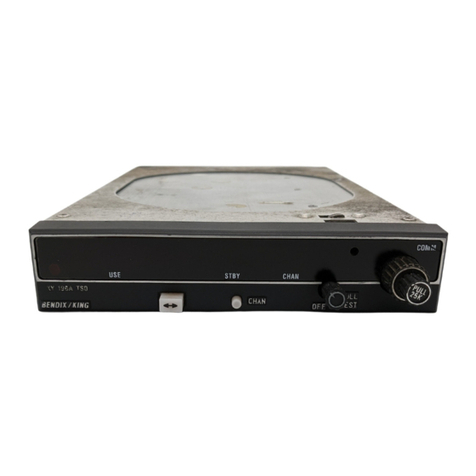
BENDIXKing
BENDIXKing KY 196 User manual
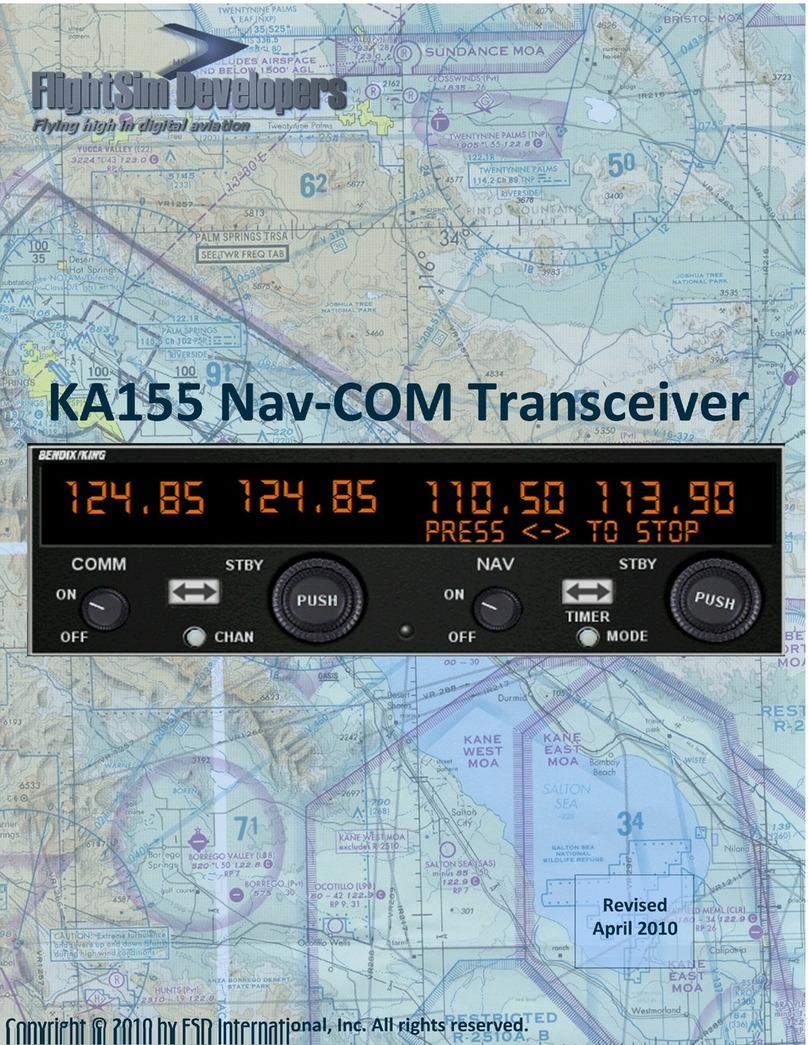
BENDIXKing
BENDIXKing KA155 User manual
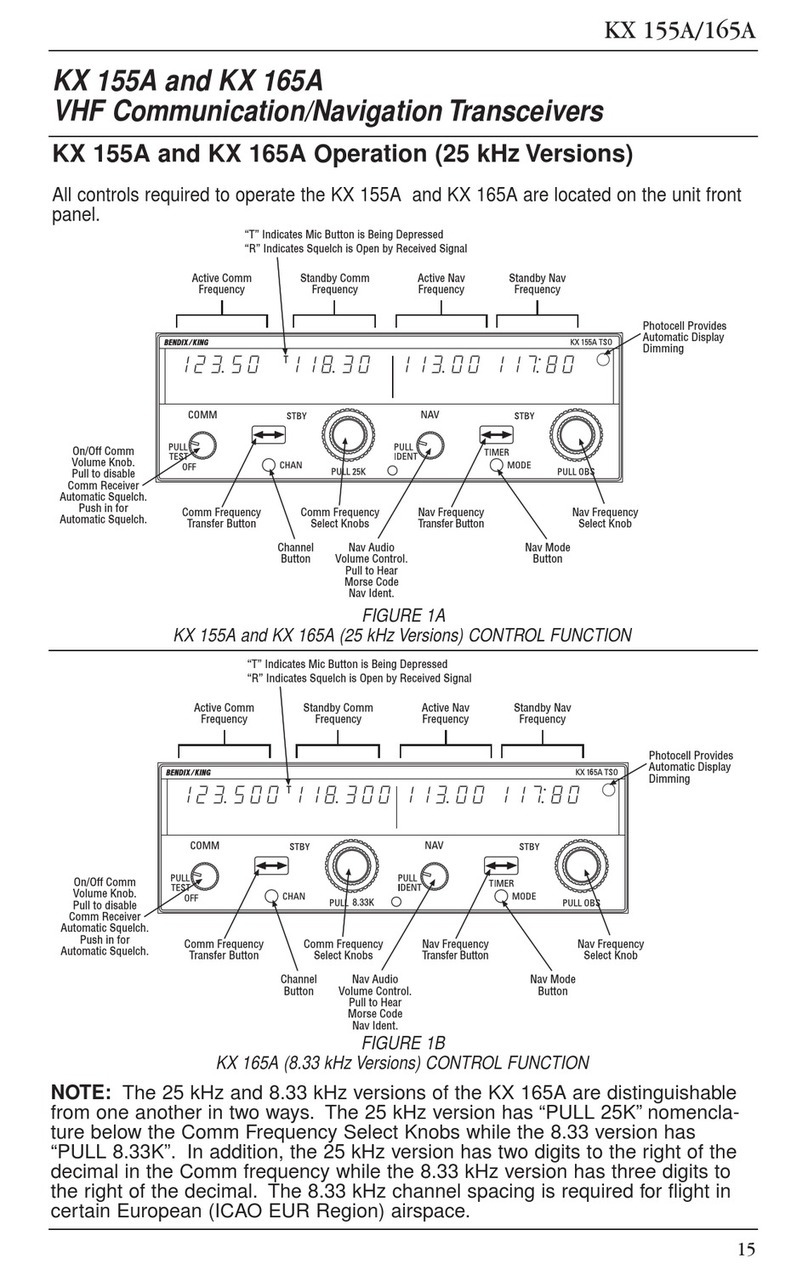
BENDIXKing
BENDIXKing KX 155A User manual

BENDIXKing
BENDIXKing KY 97A User manual
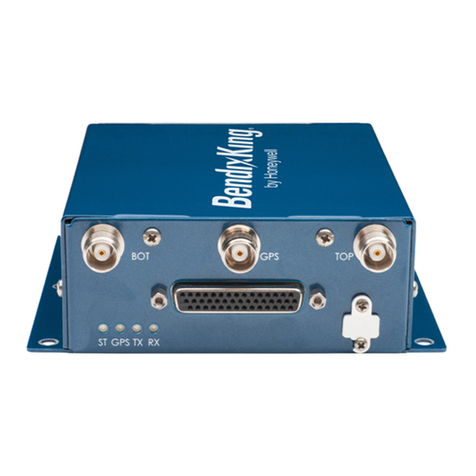
BENDIXKing
BENDIXKing KGX 150 User guide
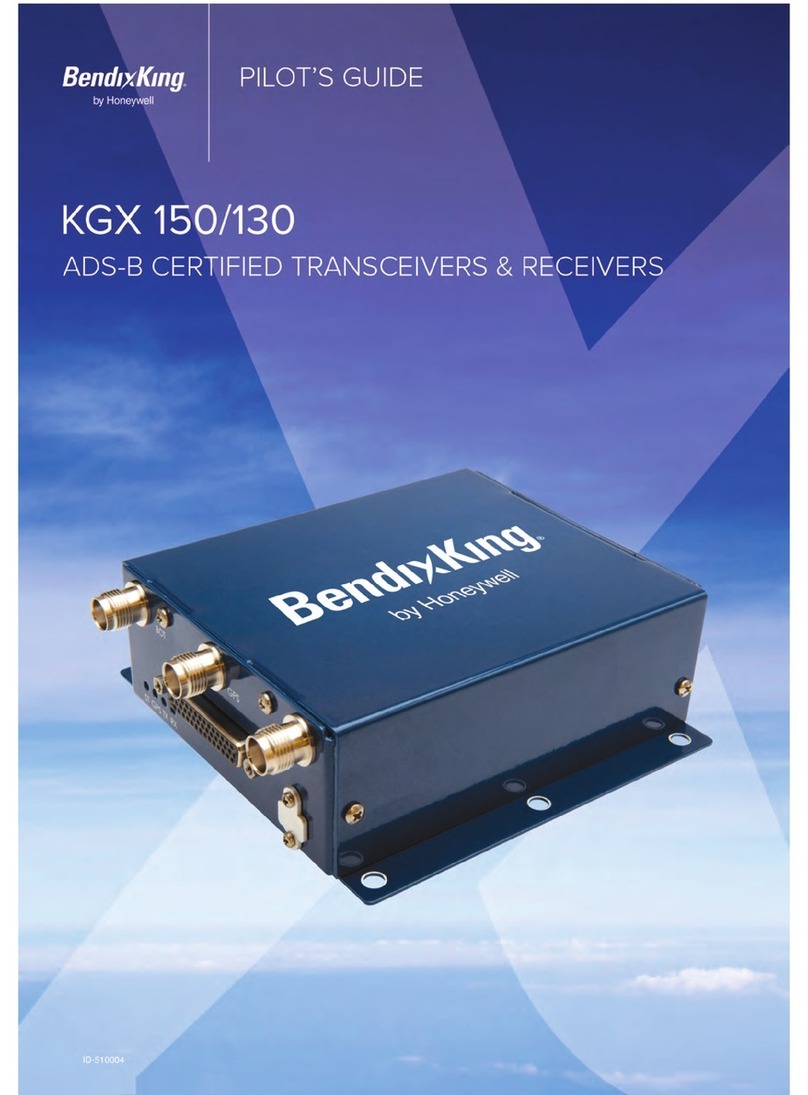
BENDIXKing
BENDIXKing RGX 150 Manual

BENDIXKing
BENDIXKing KLX 135 User manual

BENDIXKing
BENDIXKing KY 196A User manual
